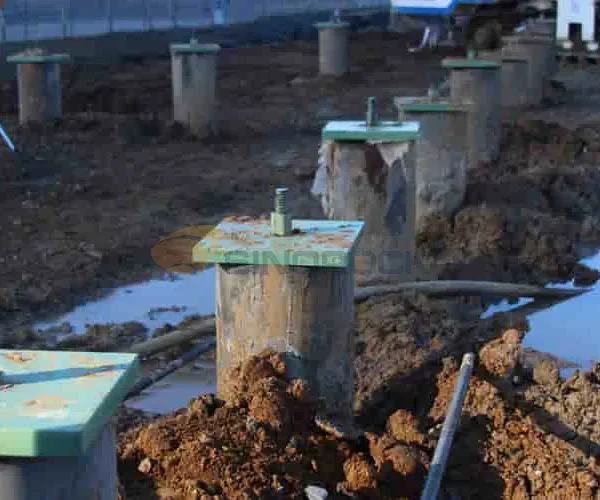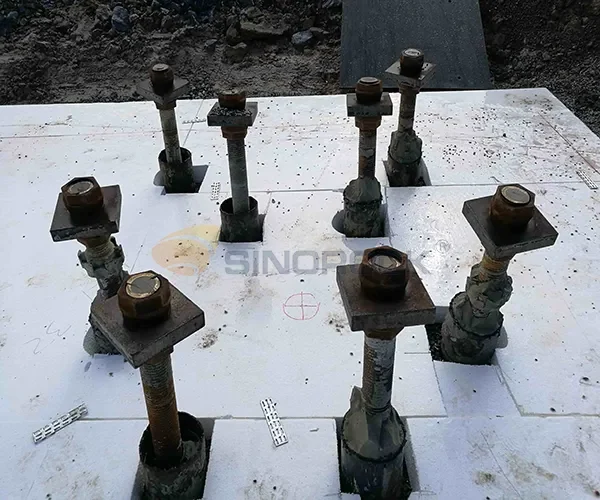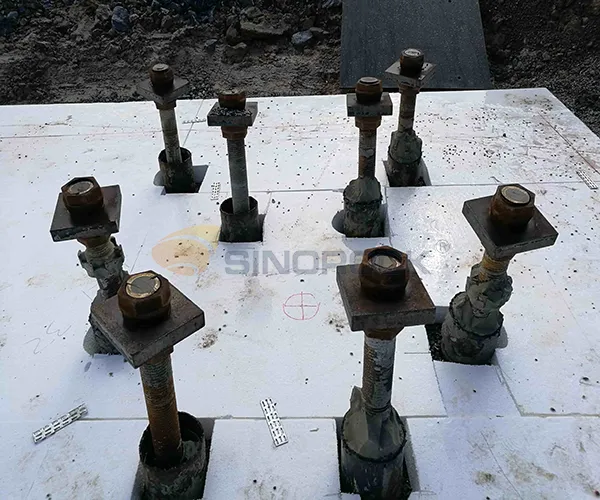Micropiles are structural members to transfer actions to the ground and may contain bearing elements to transfer directly or indirectly loads and or to limit deformations. Generally defined as grouted piles with a diameter of less than 400 mm, a length to slenderness ratio of more than 30, and the construction process of drilling, strong reinforcement and pressure grouting. Micropiles with a service life of up to 50 years dependent on the ground conditions and including sacrificial corrosion for the time-dependent corrosion behaviour.


Self-drilling rock bolts are formed by drilling and injecting water slurry at high pressure to form a grouted pile, where the cement slurry body interlocks with the soil and transfers the friction to the surrounding soil, so the axial load of the structure is transferred to a deeper and better bearing layer on the foundation ground, where the hollow anchor body carries most of the applied load. The cement slurry body wraps the rod body to increase its diameter, which can improve the stiffness of the grouted pile. The cement paste wrapped around the rod body acts as a corrosion inhibitor, so the self-drilling rock bolt can be used as a micropile to realize permanent support.
A micropile is generally described by three main components: a pile head, which takes on the load of the above structure, a shaft and root fixed with grout to the surrounding layers of ground and transfers the load to it.
Micropiles can be designed to accommodate tensile as well as compression forces, provided the piles are properly grouted into a load-bearing stratum. This makes them useful in applications with varying load patterns, such as in dams and jetties, where fluctuations in the adjacent water level have a large influence on the load. This would also be the case for reinforcing structures below towers or masts, where horizontal loads, such as wind, might have an impact on the load pattern.
If the overburden layer is shallow, the micropile can be installed into the bedrock and will therefore receive most of its bearing capacity from the base, resulting in a so called end-bearing pile. If installed in areas with a wide overburden layer, the micropile transfers the load of the supported structure to the surrounding soil via friction along pile-soil interface. This is called a skin friction pile and is achieved with cement grouting technique.


One of the great advantages of micropiling in comparision with other piling methods, is that it causes minimal impact to surrounding structures in terms of noise and vibrations.
A significant feature of the friction micropile is its quick response to any, settlement of the supported structure. As they are grouted with high pressure the micropiles manage to get the soil resistance capacity almost immediately.
Contact us now if you have any questions about our company and products. We will retain your information completely private.
Tel.: +86-379-65287220
Phone: +86-17539592302
Email: sinorock@sinorockco.com
Add. : No. 1703, Building 3, No. 1 Fenghua Road, High-tech, District, Luoyang , China (Henan)Pilot Free Trade Zone, Henan Province, P.R. China.
We will contact you within 1 working day, please pay attention to the email with the suffix “@sinorockco.com”.
*We will send our brochure to your email after submitting.